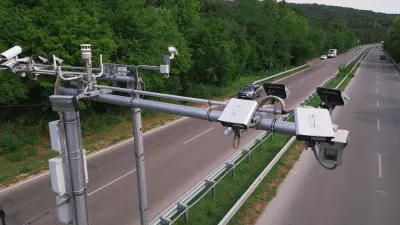
The A1 Motorway in Switzerland is the country's longest and most crucial route, stretching over 410 kilometers from the French border at Geneva to the Austrian border near St. Margrethen. Serving as the backbone of the Swiss road network, the A1 connects major cities including Geneva, Lausanne, Bern, Zurich, and St. Gallen, facilitating both domestic and international travel.
A Scenic Journey Across Switzerland
Driving along the A1 Motorway is not just about getting from point A to point B—it's an opportunity to witness the breathtaking beauty of Switzerland's diverse landscapes. The route takes you past the serene waters of Lake Geneva, through the historic vineyards of Lavaux, across the rolling hills of the Jura mountains, and into the bustling urban environments of Zurich and Lausanne.
Each segment of the A1 offers unique scenic views, from the picturesque rural areas to the dynamic cityscapes. Whether you're traveling for leisure or business, the A1 provides an efficient and visually rewarding experience.

The A1 Motorway is a pivotal part of the Swiss transportation network, connecting with several other major motorways and regional roads. Some of the key interchanges include:
- Geneva (A1/A40): This interchange is a major gateway to France, offering seamless access to the French motorway system via the A40, leading towards the French Alps.
- Lausanne (A1/A9): At Lausanne, the A1 connects with the A9, which runs along the northern shore of Lake Geneva, providing access to the Valais region and the Simplon Pass.
- Bern (A1/A6): The A1 intersects with the A6 near Bern, the Swiss capital, offering routes towards Thun and the scenic Bernese Oberland.
- Zurich (A1/A3/A4): Zurich serves as a central hub on the A1, with connections to the A3, leading to Chur and the Graubünden region, and the A4, heading towards Schaffhausen and the German border.
Switzerland has a well-established toll system that requires all vehicles using the motorway network, including the A1, to display a vignette. Traditionally, the vignette was a physical sticker attached to the vehicle's windshield, valid for a calendar year. However, with the advent of the eVignette, traveling on Swiss motorways has become even more convenient.
What is an eVignette?
The eVignette is the digital version of the traditional motorway vignette. It is linked to the vehicle’s license plate number, eliminating the need for a physical sticker. This system simplifies the process of purchasing, renewing, and managing toll payments for both Swiss residents and international travelers.

Obtaining an eVignette is straightforward. You can buy online through the official E-Vignette Switzerland tolling website or via authorized vendors. The process involves entering your vehicle's registration details and making an online payment. Once completed, the eVignette is immediately active, allowing you to drive on Swiss motorways without any delays.
Benefits of the Swiss eVignette
The eVignette offers several advantages over the traditional vignette:
- Convenience: No need to apply or remove a physical sticker; the toll is linked directly to your license plate.
- Instant Activation: Upon purchase, the eVignette is active immediately, providing quick and hassle-free access to the motorways.
- Environmentally Friendly: Reduces waste by eliminating the need for stickers, contributing to Switzerland’s sustainability goals.
- Easy Renewal: When your Swiss eVignette expires, renewing it online is simple and quick, with no need to visit physical points of sale.
Where to Use the eVignette
The Swiss eVignette is required for all motorways in Switzerland, including the A1. It covers the entire network, so whether you're traveling from Geneva to Zurich or from Lausanne to St. Gallen, the eVignette ensures you’re compliant with Swiss toll regulations.
Enforcement and Compliance
Swiss authorities are strict about toll compliance, and vehicles using motorways without a valid vignette or Switzerland eVignette are subject to hefty fines. Enforcement is carried out through both manual checks and automated license plate recognition systems installed on the motorways.
The A1 Motorway is not just a critical route within Switzerland but also a key connector in the broader European road network. It forms part of the E25, E35, and E60 European routes, linking Switzerland to France, Italy, Germany, and Austria. As such, it plays a vital role in facilitating trade, tourism, and cross-border cooperation.

Swiss motorways, including the A1, are renowned for their safety and efficiency. Speed limits are strictly enforced, with a general limit of 120 km/h on motorways. Variable speed limits and traffic management systems are in place in certain areas to optimize traffic flow and enhance safety, especially near urban centers and during peak travel times.
Drivers are advised to stay informed about road conditions, particularly during the winter months when snow and ice can impact travel. The A1 is well-maintained year-round, with regular updates provided through road signs and traffic broadcasts.
The A1 Motorway in Switzerland is an essential part of the nation's transportation infrastructure, offering a reliable, scenic, and efficient route through the heart of the country. With the introduction of the eVignette, accessing and traveling on the A1 has never been easier. Whether you're commuting daily or exploring Switzerland's diverse regions, the A1 Motorway, supported by the convenience of the eVignette, ensures a smooth journey from start to finish.
